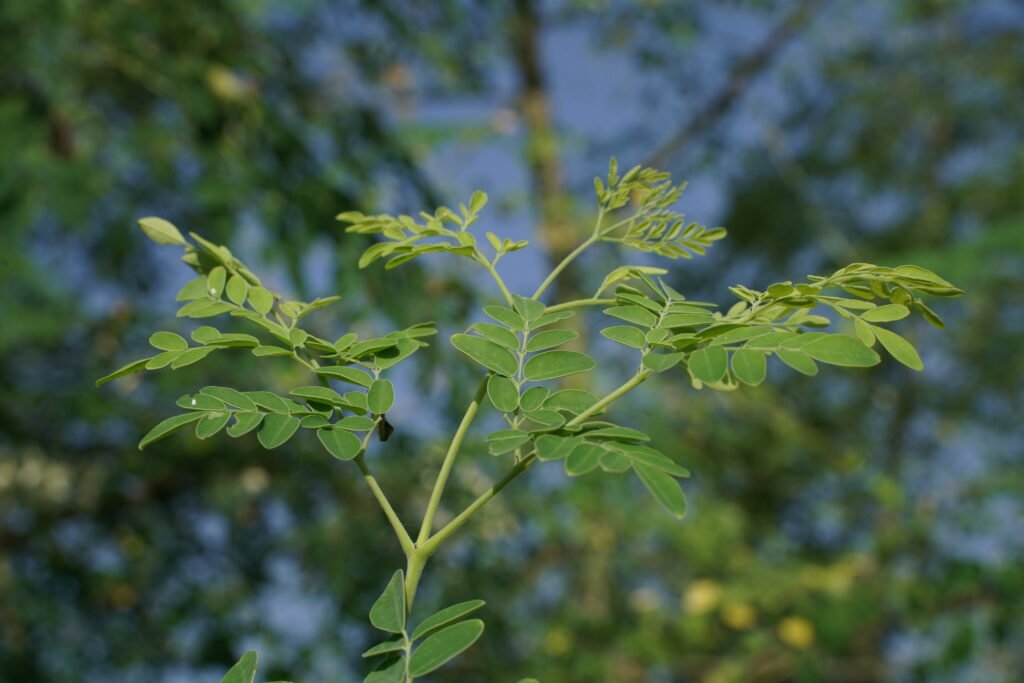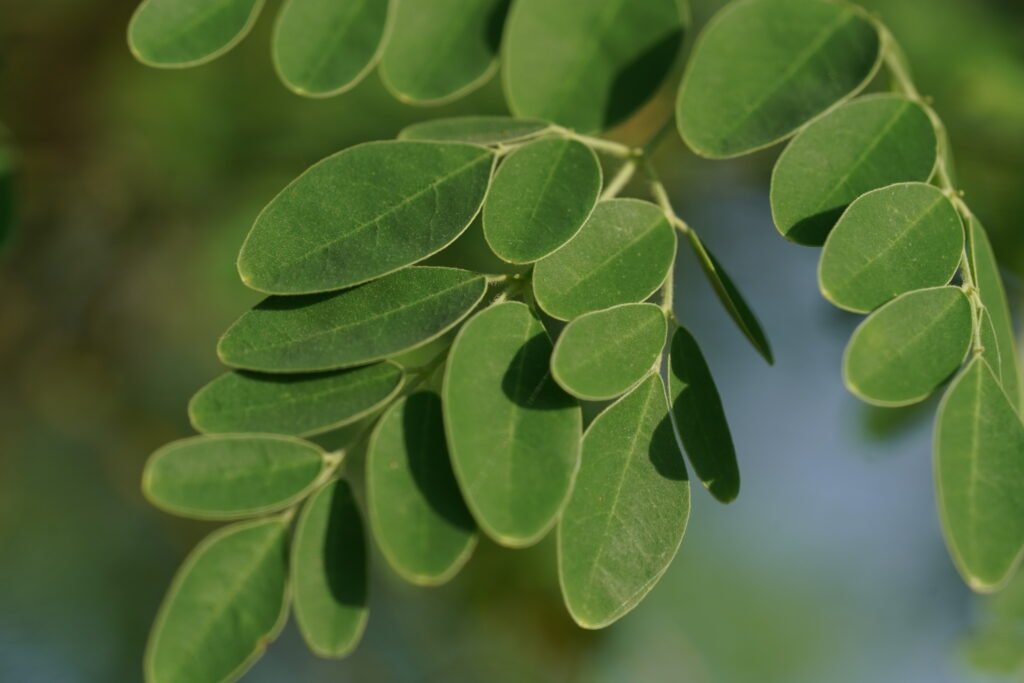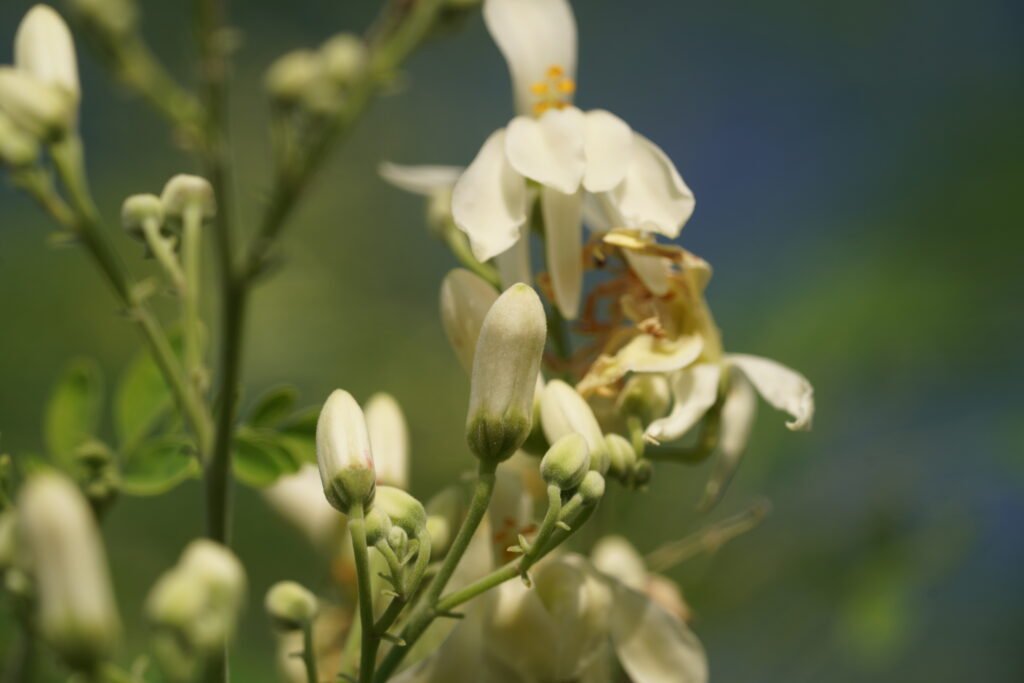 02 April 2025
02 April 2025How to Protect Moringa Trees from Harmful Insects Naturally
The Moringa tree, often called the “Miracle Tree,” is celebrated for its nutritional value, medicinal properties, and fast growth. While it is naturally hardy, it is not immune to harmful insect pests that can damage its leaves, flowers, and pods, ultimately affecting its health and yield.
While chemical pesticides offer a quick fix, they come with drawbacks—harming beneficial insects, contaminating the environment, and posing health risks. Instead, embracing natural pest control methods ensures a sustainable, eco-friendly, and often equally effective approach to keeping your Moringa trees safe.
In this comprehensive guide, we’ll explore common Moringa tree pests and practical, natural methods to control them—without resorting to harmful chemicals.

Identifying the Common Pests of Moringa Trees
Before we dive into the solutions, it’s crucial to identify the common culprits that might be feasting on your precious Moringa:
- Aphids: These tiny, sap-sucking insects often cluster on young shoots and the undersides of leaves, causing yellowing, curling, and stunted growth. They also excrete honeydew, which can lead to sooty mold.
- Caterpillars (Leafworms): Various types of caterpillars can devour Moringa leaves, leaving behind ragged edges and sometimes defoliating entire branches.
- Grasshoppers: These larger insects can chew on leaves and young stems, causing significant damage, especially to young trees.
- Whiteflies: Similar to aphids, whiteflies suck sap from leaves, causing yellowing and weakening the plant. They also produce honeydew.
- Pod Borers: These larvae burrow into the developing Moringa pods, feeding on the seeds and rendering them unusable.
- Scale Insects: These immobile insects attach themselves to stems and leaves, sucking sap and weakening the plant. They are often covered in a protective waxy or scale-like coating.
- Mites: These tiny arachnids feed on plant sap, causing stippling or discoloration on the leaves. Heavy infestations can lead to leaf drop.

The Natural Arsenal: Effective Pest Control Strategies
Now, let’s explore the arsenal of natural methods you can employ to protect your Moringa trees:
1. Healthy Trees are Resilient Trees: Prevention is Key
- Choose Healthy Seedlings/Cuttings: Start with disease-free and vigorous planting material.
- Proper Planting and Spacing: Ensure adequate spacing between trees to allow for good air circulation and sunlight penetration. This helps prevent the build-up of humidity that can attract pests and diseases.
- Maintain Soil Health: Healthy, well-drained soil rich in organic matter promotes strong root development and overall plant vigor, making the tree less susceptible to pest attacks. Amend your soil with compost and well-rotted manure.
- Adequate Watering: Provide consistent watering, especially during dry periods, but avoid overwatering, which can lead to root rot and weaken the plant.
- Regular Monitoring: Regularly inspect your Moringa trees for any signs of pest infestation. Early detection is crucial for effective natural control. Look for unusual leaf discoloration, holes, sticky residue (honeydew), or the presence of insects themselves.
- Pruning: Regularly prune dead, damaged, or overcrowded branches. This improves air circulation and removes potential hiding places for pests.
2. The Power of Beneficial Insects: Natural Predators
Encouraging beneficial insects into your garden is a highly effective and sustainable way to control pest populations. These natural predators will hunt and feed on the harmful insects attacking your Moringa trees. Some beneficial insects to attract include:
- Ladybugs: These voracious predators feast on aphids, scale insects, and mites. You can attract them by planting dill, fennel, and other flowering herbs.
- Lacewings: Both the larval and adult stages of lacewings are excellent predators of aphids, mites, whiteflies, and small caterpillars. They are attracted to dill, coriander, and yarrow.
- Praying Mantises: These fascinating insects are ambush predators that will consume a wide range of pests, including caterpillars, grasshoppers, and aphids.
- Parasitic Wasps: These tiny wasps lay their eggs inside the bodies of pest insects, eventually killing them. Planting flowering plants like fennel, dill, and parsley can attract them.
- Spiders: While not insects, spiders are natural predators that help control various crawling and flying pests.
How to Attract Beneficial Insects:
- Plant a Diverse Garden: Include a variety of flowering plants, herbs, and vegetables to provide food and shelter for beneficial insects.
- Avoid Broad-Spectrum Pesticides: These chemicals kill both harmful and beneficial insects.
- Provide Water Sources: A shallow dish of water with pebbles can provide drinking water for beneficial insects.
- Create Habitat: Leave some leaf litter and undisturbed areas in your garden to provide overwintering sites for beneficial insects.
3. Use Botanical Insecticides: Nature’s Own Pest Control
Certain plants possess natural insecticidal properties that can be used to deter or kill harmful insects. Here are some effective botanical options for your Moringa trees:
- Neem Oil: This broad-spectrum insecticide and fungicide is derived from the neem tree. It disrupts the feeding and molting of many insect pests, including aphids, whiteflies, caterpillars, and scale insects. Mix neem oil with water and a few drops of mild soap as an emulsifier and spray thoroughly on all parts of the tree, especially the undersides of leaves. Apply in the early morning or late evening to avoid leaf burn.
- Garlic Spray: Garlic contains sulfur compounds that act as a repellent to many insects. Crush a few cloves of garlic, soak them in water overnight, strain the liquid, and add a few drops of liquid soap. Spray this solution on your Moringa trees.
- Chili Pepper Spray: The capsaicin in chili peppers is irritating to many insects. Boil a few dried chili peppers in water, let it cool, strain, and add a few drops of liquid soap. Use this spray cautiously, avoiding contact with your eyes and skin.
- Insecticidal Soap: This simple solution disrupts the outer layer of soft-bodied insects like aphids, whiteflies, and mites, causing them to dehydrate and die. Mix a mild liquid soap (not detergent) with water and spray directly on the affected areas. Ensure good coverage as it works on contact.
- Pyrethrum: Derived from chrysanthemum flowers, pyrethrum is a natural insecticide that affects the nervous system of insects. Use it according to the product instructions, as it can also be harmful to beneficial insects if not applied carefully.
4. Physical Barriers and Traps: Simple Yet Effective
- Sticky Traps: Yellow sticky traps can be hung near your Moringa trees to attract and trap flying insects like aphids and whiteflies.
- Row Covers: For young seedlings or smaller trees, lightweight fabric row covers can provide a physical barrier against flying insects. Ensure the covers are properly secured and allow for adequate airflow.
- Handpicking: For larger pests like caterpillars and grasshoppers, simply handpicking them off the plants and disposing of them can be surprisingly effective, especially for smaller infestations.
- Water Spray: A strong jet of water from a hose can dislodge aphids, spider mites, and other small, soft-bodied insects from the leaves. Repeat as needed.
5. Companion Planting: The Power of Plant Partnerships
Certain plants can repel harmful insects or attract beneficial ones when planted near your Moringa trees. Some beneficial companion plants include:
- Marigolds: These colorful flowers release compounds that repel nematodes and some flying insects.
- Basil: Its strong scent can deter aphids, whiteflies, and other pests.
- Mint: Similar to basil, mint’s aroma can repel various insects. Plant it in containers to prevent it from spreading aggressively.
- Nasturtiums: These attract aphids, drawing them away from your Moringa trees, and also attract beneficial predatory insects.

Important Considerations for Natural Pest Control:
- Consistency is Key: Natural pest control often requires more consistent effort than chemical methods. Regularly monitor your trees and apply treatments as needed.
- Start Early: Address pest problems when they are still small and manageable. Large infestations can be more difficult to control naturally.
- Combine Strategies: Often, the most effective approach involves combining several natural pest control methods.
- Observe and Adapt: Pay attention to which methods are working best in your specific garden environment and adjust your strategies accordingly.
- Be Patient: Natural pest control may take a little longer to show results compared to chemical pesticides.
Conclusion
Protecting your Moringa trees from harmful insects naturally is a rewarding endeavor that benefits both your garden and the environment. By understanding the common pests, implementing preventative measures, attracting beneficial insects, utilizing botanical insecticides, and employing physical barriers and companion planting, you can create a thriving Moringa garden that yields its valuable bounty without the need for harmful chemicals. Embrace these natural strategies and enjoy the fruits (and leaves and pods!) of your labor in a healthy and sustainable way.





